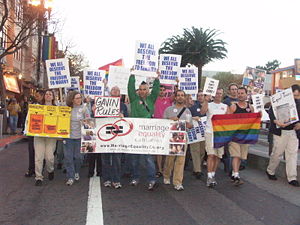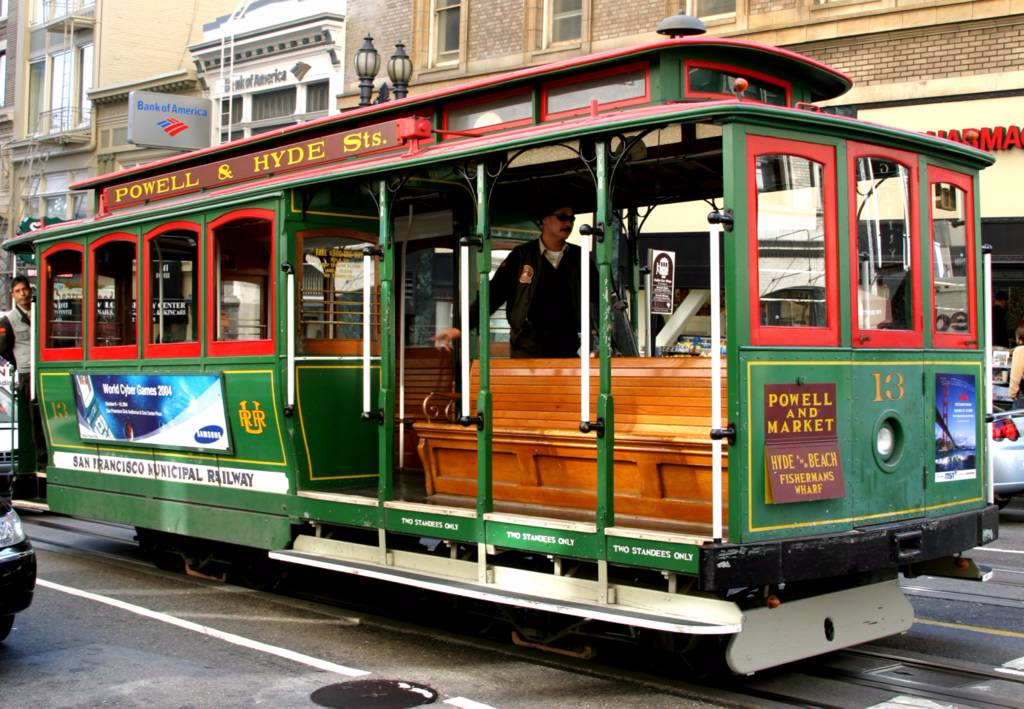San Francisco Bay Guardian, 2002-08-21, v36-n47 - 47pge
It's your dam — don't let PG&E keep you from using it: San Francisco owns a hydroelctric dam at Hetch Hetchy Valley in the Sierras, but the cheap public power has never reached local residents and businesses. Prop. D could change that.
PHOTO BY SAVANNAH BLACKWELL
chart hed and sub:
How to shut down PG&E’s dangerous, dirty Hunters Point plant
(and stop the expansion of Mirant’s Potrero Hill plant)
CAPTION FOR CHART:
This chart shows how the city’s energy czar, Ed Smeloff, proposes to shut down PG&E’s Hunters Point plant, which community activists say is a leading cause of health problems in the neighborhood, and to prevent the expansion of the Mirant plant in Potrero Hill. The graph shows how, by 2005, the H.P. plant can be phased out entirely, its energy replaced by energy efficiency, smaller, cleaner combustion turbines, and renewable energy sources. Reliance on the Mirant plant will drop significantly by 2006. But the plan won’t work unless voters pass Prop. D, which provides the financing mechanism to develop those alternative energy sources.
SOURCE: ELECTRICITY RESOURCES PLAN, BY THE SAN FRANCISCO PUBLIC UTILITIES COMMISSION AND THE DEPARTMENT OF THE ENVIRONMENT
Powering ahead
Two landmark city reports show why San Francisco needs to get rid of PG&E. But the city's plan won't work without Prop. D. By Savannah Blackwell
San Francisco's top energy advisor and a highly regarded consulting firm have both released reports indicating that public power is the city's best hope for preventing blackouts and exorbitant electricity rate hikes and ending deadly pollution in the southeast part of town.
And yet Mayor Willie Brown — a former lawyer for Pacific Gas and Electric Corp. (the local utility's parent company) who has received tens of thousands of dollars in campaign money from the utility — still refuses to endorse the public power measure on the November ballot, Proposition D.
Ed Smeloff, the San Francisco Public Utilities Commission (SFPUC) assistant general manager, and R.W. Beck, a Sacramento-based energy consulting firm, both say the way to get safer, cleaner, and more reliable energy is for the city to take a greater role in developing energy supplies for use by residents and businesses.
“This validates everything we've been saying last year and this year," said Ross Mirkarimi, director of the Yes on D campaign. “And that is that San Francisco has been poised to be more energy self-sufficient than reliant on private corporations like Pacific Gas and Electric and Mirant — who put profit before people."
“Prop. D provides the fiscal muscle needed to implement the city's new energy plan," he said. “[The city] has no chance of achieving its goal of shutting down the Hunters Point power plant by 2005 unless Prop. D is passed.”
In a report released Aug. 16, Smeloff, with staffers from the city's Department of the Environment, outlined a plan that would allow for the closure of the dirty, 40-year-old Hunters Point plant — a move residents of the Bayview and Hunters Point neighborhoods have demanded for years. The plan also makes the planned expansion of Mirant Corp.'s Potrero Hill power plant unnecessary (Mirant has submitted a proposal to more than double the plant's size).
Air quality officials consider the two plants the largest stationary sources of pollution in the city. Residents and health care officials have long suspected that the facilities are major contributors to the high rates of asthma and cancer in the area.
PG&E means more blackouts
R.W. Beck representatives presented a report Aug. 15 to the city's Local Agency Formation Commission, whose members include Sups. Tom Ammiano, Matt Gonzalez, and Tony Hall, that underscored the need for the city to get involved in the way new sources of energy are developed. Ken Mellor, R.W. Beck's principal and senior director of consulting, told the commission that as long as PG&E is the city's energy supplier, San Francisco faces major blackouts and is stuck with “unreliable, inefficient, and environmentally unfriendly" sources of power.
Mellor told commissioners the city has two ways to eliminate the private monopoly: a public power agency could organize consumers into a purchasing pool, or it could take over PG&E's distribution system entirely. Either plan would give the city the ability to replace the big, filthy, fossil fuel plants PG&E and Mirant own with smaller, cleaner — and more efficient — sources of power.
Mellor said, in general, public power companies offer rates about 20 percent lower than those of private utilities (an observation made in R.W. Beck's initial report, which was released in June; see "Public Power Lite," 6/19/02). In San Francisco's case, he said, it's hard to tell exactly how large the savings might be, since PG&E is likely to bitterly fight any attempt to take over its system.
Even with a public power system, San Francisco customers might get stuck paying for at least part of the cost of the billions PG&E claims it lost buying electricity on the spot market during the energy crisis of 2000–01, Mellor said in an interview.
Still, Mellor told commissioners that the city is in a "strong position to go into fully integrated public power" because of the high level of public interest and involvement in the matter as well as the fact that the city already owns a dam that helps generate more than 200 megawatts of power.
"How much you could cut rates immediately would be uncertain, but the longer out in the future you look, the more likely it is that you would achieve greater savings," Mike Bell, Mellor's colleague at R.W. Beck, told us. "There are certainly opportunities there."
Clean energy
Smeloff's plan calls for the city to develop new sources of energy — some using fossil fuel, others relying on clean and renewable sources such as wind and the rays of the sun — and encourages it to put together programs that will coax businesses and households to use electricity more efficiently. If the proposal becomes reality, the city could drastically cut back its use of the Hunters Point plant by 2005 and shut it down entirely by 2006.
This plan is the final version of one released in March that laid out three options for the city to develop 360 additional megawatts needed by 2012 to cover both increasing electricity demand and the closure of the Hunters Point plant (see "Public Power Moves Forward," 3/20/02). The new plan is available on the city's Web site at www.ci.sf.ca.us/sfenvironment/aboutus/energy/policy.htm.
Under the proposal, the city would build windmills at the Altamont Pass near Livermore and install solar panels on public and some private buildings. Together, wind and solar power could supply about 200 megawatts by 2012. One plant using exhaust heat to produce electricity and steam (a process called cogeneration) would be built at Fifth and Jessie Streets and another at the new Mission Bay development. Small combustion turbines would be constructed on two state buildings, and three larger turbines would be built elsewhere in the city.
The plan would cut the city's use of nonrenewable energy in half by 2008.
Smeloff stressed that the new fossil fuel plants would be smaller, cleaner, and more efficient than the Hunters Point and Potrero facilities.
The proposal still requires some reliance on private utilities. It assumes that PG&E will follow through on its plan to upgrade part of the transmission system that brings power up the peninsula and into San Francisco by 2004. Smeloff's plan also assumes that PG&E will build a new underground transmission line by 2007. If that does not happen, the city will have to build another combustion plant, he said.
Still, the plan would greatly reduce the amount of toxic and polluting emissions in the city. In no small part that's because, unlike PG&E or Mirant, the city would run the fossil fuel plants only when necessary.
“We'll be producing a lot less pollution and greenhouse gasses," Smeloff said. “The city would run the plants not for profit but for reliability. This is going to provide us with cleaner power throughout the city and especially in the southeast."
Smeloff's plan mentions the possibility of the city creating an energy buyers’ co-op to purchase power in bulk from PG&E and resell it at lower rates to local customers. That effort would be helped if a bill sponsored by Assemblymember Carole Migden is approved by legislators and signed by Gov. Gray Davis. Migden's proposal is now in the state senate's Appropriation Committee. It would ease aggregation by making the city the automatic electricity service provider for its residents.
The bill currently contains a provision that private utilities lobbied hard to include. It allows the corporations to control some $300 million collected from ratepayers and available for renewable and conservation programs. If San Francisco doesn't get control of at least its portion of those dollars ($10 million), its customers would end up having to pay twice for such programs, said Paul Fenn, director of Oakland-based Local Power.
It's possible the bill will allow cities to apply to the California Public Utilities Commission to get control over their portions, Fenn told us. The matter is largely up to state senate pro tem John Burton, who sits on the committee. Burton's office did not return calls for comment.
Yes on D
Mayor Brown personally hired Smeloff, and it's almost certain that the mayor had seen — and signed off on — the energy plan before it was released. But the Smeloff plan has a big problem: it doesn't include a method to finance all of the new energy facilities the city needs to shut down the existing polluting plants.
The best, most obvious way to pay for those projects is to pass Prop. D, which would give a reconstituted SFPUC the authority to issue revenue bonds to pay for new energy facilities. Even Smeloff acknowledges that passage of the public power measure would make implementation of his plan much easier.
But Brown has made it clear that he won't endorse Prop. D, leaving him in the untenable position of siding with PG&E and Mirant against the proposals of his own handpicked energy advisor.
P.J. Johnston, the mayor's press secretary, said "it's unlikely" the mayor will support Prop D. “The city has a number of ways to pursue funding plans — such as from the General Fund, revenue bonds, or ratepayers. The mayor is not convinced the energy plan is predicated on [the passage of Prop. D]. No one has made that case to him yet."
However, none of Johnston's suggested ways of funding the energy plan make much sense. The General Fund? The city is already facing a $150 million deficit for the 2003–04 budget, and Johnston said he's not suggesting any program should be cut to pay for new power plants. Revenue bonds? That's exactly what Prop. D authorizes. If the mayor likes revenue bonds, why is he against D?
Ratepayers? Well, the only way ratepayers are going to cover the cost of new city-owned plants is if the city has its own ratepayers, which, again, requires a public power system. Johnston acknowledged that fact — "that's assuming that over the course of its existence [the city's power operation] will eventually have more customers,” he said — but he still couldn't explain how the city would "have more customers" without public power.
Meanwhile, support for Prop. D is growing. On Aug. 14 the Utility Reform Network (TURN), one of the state's most important consumer organizations, endorsed the measure.
“TURN has always supported safe and reliable power," spokesperson Mindy Spatt said. “Since deregulation, the private utilities seem to be getting further and further away from that. This also seems like a good option for communities that are tired of getting gouged."
The Bernal Heights Democratic Club gave the proposal the nod Aug. 14.
PG&E seems worried. Gordon Smith, PG&E Co.'s CEO and president, fired off an e-mail to employees Aug. 15 asking "each and every one of [them] to help us defeat this initiative."
"We need you. It will be the hard-working men and women of PG&E who will make the difference in this campaign," the e-mail, a copy of which was obtained by the Bay Guardian, states.
The note went on to urge employees to turn out at an Aug. 27 "lunchtime rally against Proposition D."
The e-mail includes a link to a Web site that offers further information (www/pageone/daily/2002/08/12/weneedyou.htm), but we couldn't see it — the site is password protected.







